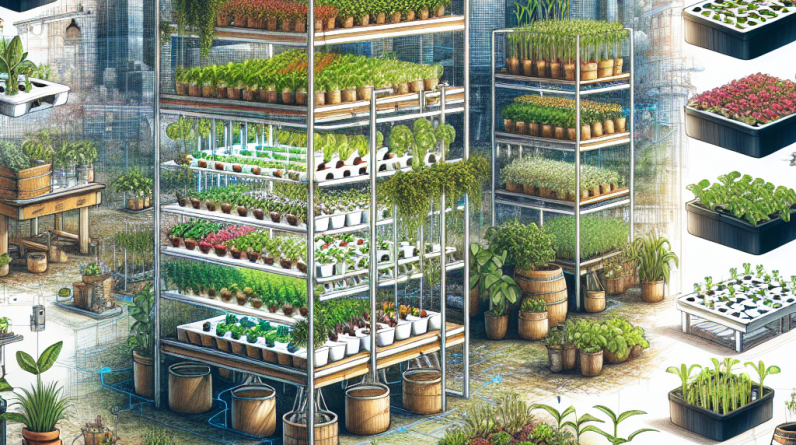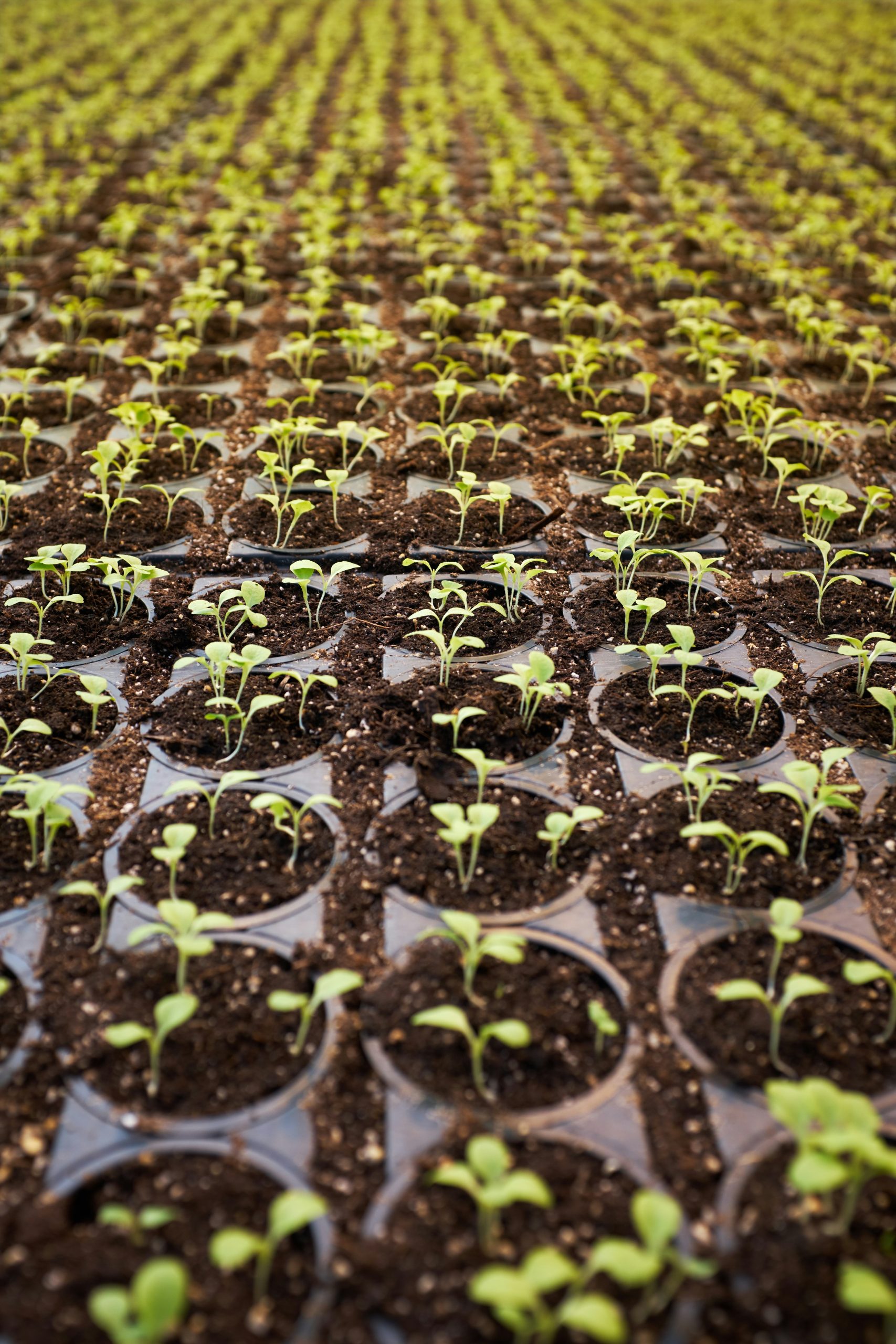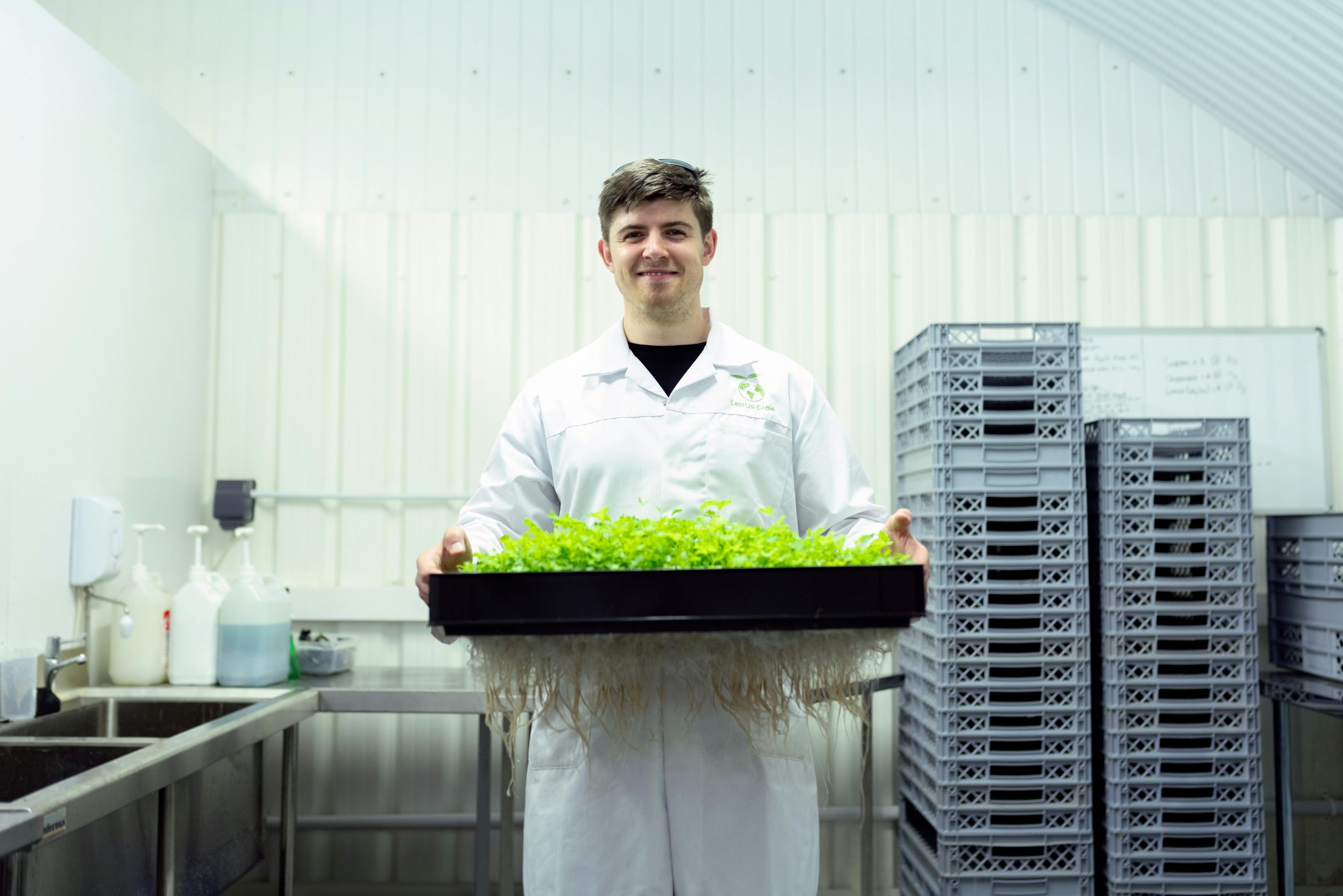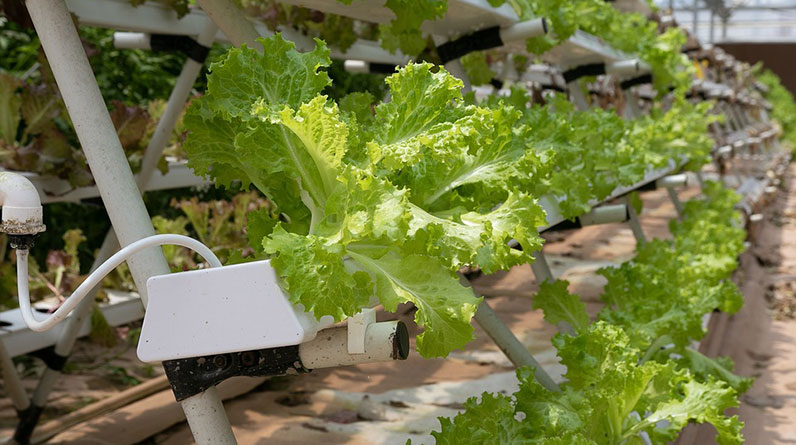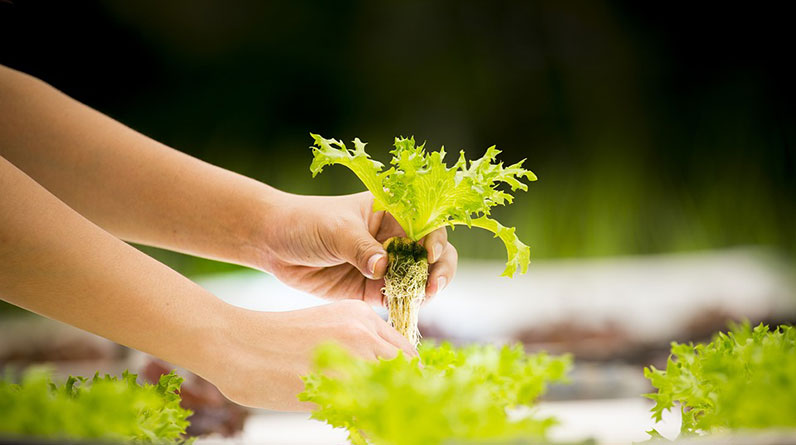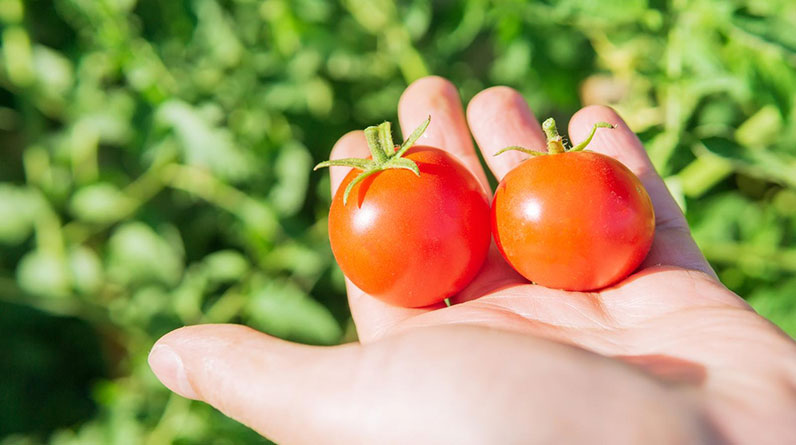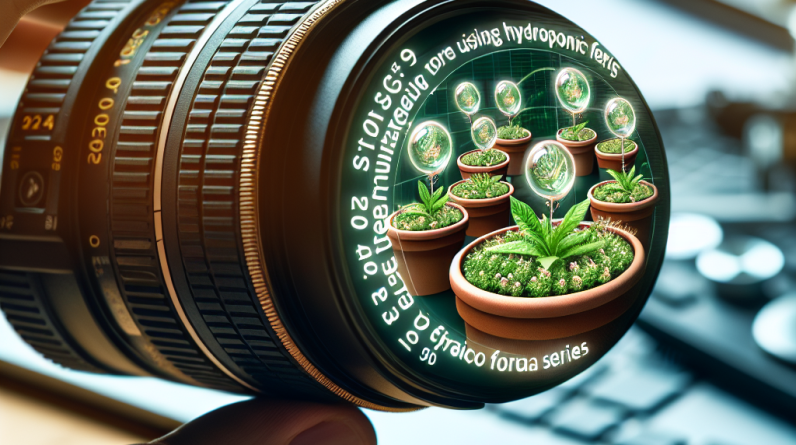
- Choose Quality Products from the General Hydroponics Flora Series
- Optimize Nutrient Mixing and Concentration
- Maintain Precise pH Levels for Maximum Absorption
- Regular Maintenance and System Cleaning
- Control Environmental Parameters Effectively
- Leverage Technology and Automation
- Adopt Integrated Pest Management Strategies
- Stay Updated with Industry Research and Trends
- Practical Troubleshooting and Problem Solving
- Join Community and Seek Expert Support
1. Choose Quality Products from the General Hydroponics Flora Series
Understanding the Selection of the Flora Series
The foundation of a successful hydroponic system in 2025 starts with selecting high-quality nutrients, and the general hydroponics flora series stands out as a trusted option. This series offers a balanced blend of macro and micronutrients tailored to promote vigorous plant growth. When shopping for the flora series, prioritize authentic products from reputable suppliers to avoid contamination or inferior formulations.
Using genuine general hydroponics flora series products ensures that your plants receive precise nutrient ratios, minimizing deficiencies and toxicities. Since its inception, the flora series has evolved, with newer formulations optimized for specific stages of growth, making it adaptable for various crop types.
In 2025, many growers are shifting towards organic and eco-friendly fertilizers, but the general hydroponics flora series maintains its reputation for consistency and reliabilityâkey factors for commercial growers and hobbyists alike.
How to Identify Authentic Products
Counterfeit products are a concern globally, so learning to identify authentic hydroponic nutrients is essential. Look for official packaging with security features, clear branding, and batch numbers for traceability. Also, purchase from authorized dealers to guarantee product integrity.
Always check for certifications such as organic or environmentally friendly labels that may be associated with the fluor series in 2025. Proper storage of your nutrientsâin a cool, dry placeâalso prolongs their effectiveness and ensures consistent results.
Pro tip: Keep a record of purchase dates and batch numbers to track performance and troubleshoot any issues effectively. This practice becomes particularly valuable when scaling up or experimenting with different grow setups.
2. Optimize Nutrient Mixing and Concentration
Best Practices for Mixing the Flora Series
Ensuring correct nutrient concentrations is crucial for robust hydroponic growth. Follow manufacturer guidelines strictlyâtypically, the flora series recommends specific ratios per gallon of water depending on the growth stage. In 2025, digital mixing devices and dispensers simplify achieving precise petiole and electrical conductivity (EC) levels.
For beginners, it’s easiest to start with recommended dosages and monitor plant responses regularly. Overfeeding can cause nutrient burn, while underfeeding results in stunted growth. Using a reliable TDS/EC meter helps to maintain optimal nutrient levels consistently.
Adjustments should be incremental; small changes allow for better control and understanding of plant reactions. Remember, balance is key in the general hydroponics flora series to maximize yield and plant health.
Frequency and Timing of Nutrient Application
Consistent feeding schedules are vital. Depending on your crop and growth phase, nutrient solutions may need to be replenished every 1-3 days to prevent nutrient depletion. In 2025, automated systems can alert you when it’s time to top up or change the solution, reducing manual errors.
For optimal results, adjust feed strength during different growth stagesâhigher during flowering, lower during early vegetative phases. Regular testing and record-keeping empower you to refine your feed schedule over time.
By maintaining proper nutrient balance, you ensure healthy root development and vigorous plant growth, key to maximizing productivity with the general hydroponics flora series.
3. Maintain Precise pH Levels for Maximum Absorption
The Importance of pH in Hydroponics
pH significantly influences nutrient availability. The general hydroponics flora series performs best within an optimal pH range of 5.5 to 6.5, allowing plants to absorb nutrients efficiently. Deviations outside this range can lock out essential elements, leading to deficiencies even with proper nutrient dosing.
In 2025, pH management has become more sophisticated with digital pH meters and automated pH controllers. This technology allows hands-free adjustments, maintaining a stable environment conducive to plant health.
Regular pH testingâat least dailyâis a good practice. Small, consistent adjustments are preferable rather than large swings, which stress plants and impair nutrient uptake.
Adjusting pH Safely and Effectively
pH adjustments typically involve adding acids such as phosphoric acid or pH up solutions. Use these chemicals cautiously and follow manufacturer instructions to avoid overshooting the target pH. Record pH readings consistently to observe trends and react proactively.
Over time, you will understand how your water source and nutrient concentrations affect pH stability. In 2025, integrating pH controllers with your watering system minimizes human error and optimizes plant growth.
Tip: Always calibrate your pH meters regularly for accurate readings. Accurate pH control is foundational when working with the general hydroponics flora series.
4. Regular Maintenance and System Cleaning
Why Maintenance Matters
Consistent system maintenance, including cleaning of tanks, tubing, and emitters, prevents the buildup of algae, mold, and pathogens that can harm your plants. Clean systems foster healthier roots and prevent blockages that hinder nutrient flow, which is vital when using the general hydroponics flora series.
Regularly replacing parts such as filters and valves extends system longevity and ensures optimal performance. In 2025, many growers incorporate automated cleaning routines and disinfection protocols to streamline upkeep.
Neglecting maintenance can result in nutrient imbalances, reduced yields, or crop failure. A proactive approach keeps your hydroponic setup running smoothly and efficiently.
Cleaning Procedures and Tips
Periodic disinfection using appropriate solutionsâlike hydrogen peroxide or proprietary cleaning agentsâhelps eliminate unwanted microbes. Before reassembling, thoroughly rinse all components to prevent chemical residues from affecting plants.
Establish a cleaning schedule tailored to your system’s size and usage frequency. Smaller setups require less frequent cleaning, but regular inspections are still essential. Documenting maintenance routines aids in troubleshooting issues related to the general hydroponics flora series.
Effective cleaning not only promotes plant health but also maximizes the lifespan of your equipment and nutrient solutions.
5. Control Environmental Parameters Effectively
Temperature, Humidity, and Light
Controlling temperature, humidity, and lighting creates an ideal environment for your plants to thrive with the general hydroponics flora series. In 2025, automated climate control systems are increasingly popular among growers, allowing precise adjustments and real-time monitoring.
Optimal temperature ranges are typically between 65-78°F (18-25°C), and humidity should be maintained around 50-70%, depending on the crop. Proper lightingâintensity and spectrumâfurther enhances photosynthesis and growth rates.
Consistent environmental conditions reduce stress and abnormalities, ensuring uniform crop development and maximizing yield potential.
Optimizing Air Circulation and Ventilation
Good air circulation prevents mold, pests, and disease, especially in densely packed hydroponic systems. Use fans and exhaust systems to maintain airflow and temperature stability. Fresh air exchange supplies CO2 necessary for photosynthesis, accelerating plant growth.
In 2025, integrating environmental sensors with smart controllers allows automatic adjustments, keeping parameters within ideal ranges continuously. This creates a stable environment that complements the nutrient strategies of the general hydroponics flora series.
Healthy environmental control directly correlates with vibrant plant growth and efficient nutrient uptake, crucial for your success in hydroponic gardening.
6. Leverage Technology and Automation
Smart Systems for Monitoring and Control
Embracing automation in 2025 is a game-changer. Sensors measuring pH, EC, temperature, and humidity feed data into centralized control units that adjust nutrient delivery and environmental factors automatically. This reduces human error and saves time.
The general hydroponics flora series benefits from these advancements because consistent feeding and environment lead to better plant health and higher yields. Many growers rely on apps and home automation systems to keep everything in check remotely.
Automation allows for precise timing of nutrient and water application, crucial when working with sensitive formulations like those in the flora series.
Data Analytics and Growth Optimization
Analyzing data trends of environmental conditions and plant responses helps optimize growth protocols. Using historical data, you can fine-tune your nutrient schedules and environmental settings for different crops or growth stages.
In 2025, predictive analytics powered by AI can forecast when plants need adjustments, helping you stay ahead of potential issues. This proactive approach enhances plant health and maximizes the effectiveness of your general hydroponics flora series.
Adopting these technologies is essential for serious growers aiming for high-quality yields and sustainable practices.
7. Adopt Integrated Pest Management Strategies
Basics of Pest and Disease Prevention
Pests and diseases can compromise your crop health, especially in hydroponic setups where rapid spread is common. Implementing a comprehensive pest management plan is vital when using the general hydroponics flora series.
Use biological controls, such as beneficial insects, alongside cultural practices like clean growing environments and crop rotation to prevent infestations. Regular inspection and early detection are key to minimizing chemical interventions.
In 2025, many growers use integrated pest management (IPM) tools that combine monitoring with targeted interventions, reducing pesticide use and promoting eco-friendly practices.
Healthy Growth and Pest Resistance
Plants nourished with the flora series and grown under optimal conditions tend to be more resilient to pests and diseases. Ensuring high vigor through balanced nutrients and good environmental control creates a natural defense.
When pests do appear, act swiftly with targeted solutions â avoiding broad-spectrum chemicals that might harm beneficial organisms or contaminate your crops.
Combining these strategies with proper sanitationâregularly cleaning equipment and removing debrisâensures a healthy crop free of pests and diseases, complementing your hydroponic success in 2025.
8. Keep Up with Industry Research and Trends
Latest Developments in Hydroponics
The hydroponic industry evolves rapidly, and 2025 is no exception. Staying updated on the latest research, innovative nutrient formulations, and technology advancements ensures your practices remain competitive and efficient.
Research indicates that combining organic amendments with the general hydroponics flora series can enhance flavor and nutrient density. Also, new grow light spectrums optimize photosynthesis and reduce energy consumption.
Participating in webinars, reading journals, and subscribing to industry newsletters can keep you informed and inspired to incorporate cutting-edge techniques.
Adapting to New Regulations and Standards
Environmental and safety regulations are tightening worldwide. In 2025, compliance involves choosing sustainable inputs, reducing waste, and documenting procedures meticulously. The flora series’ eco-friendly formulations align well with these trends.
Monitoring industry standards ensures your operation passes inspections and maintains credibility with consumers and partners alike.
Continuous learning and adaptation are crucial for long-term success in hydroponics, especially when aiming to optimize results with the general hydroponics flora series.
9. Practical Troubleshooting and Problem Solving
Common Issues and Solutions
Encountering problems such as nutrient deficiencies, pH fluctuations, or root rot can be frustrating. Understanding their causes and solutions is essential to maintain healthy plants using the general hydroponics flora series.
For example, yellowing leaves may indicate nitrogen deficiency, but could also result from pH imbalance. Regular testing helps differentiate issues quickly, allowing precise fixes.
In 2025, many growers rely on diagnostic apps and forums to troubleshoot problems in real-time, sharing experiences and advice that lead to rapid resolution.
Preventative Measures
Prevent issues through proper planning: maintain clean systems, monitor environmental parameters, and avoid over- or under-feeding. A proactive approach reduces the risk of crop loss and enhances overall productivity.
Keep detailed records of interventions and outcomes to refine your practices continually. Incorporating smart technology and staying informed about the latest solutions ensures you’re prepared for common challenges, especially when using the precise formulations in the general hydroponics flora series.
Remember, early detection and correction are your best tools for long-term success.
10. Join Community and Seek Expert Support
The Power of Community
Joining online forums, social media groups, or local clubs dedicated to hydroponics fosters knowledge sharing and support. Experienced growers often share valuable tips for maximizing the performance of the general hydroponics flora series.
Attending industry events or workshops can also expand your network and provide hands-on training, increasing your confidence and competence.
In 2025, digital communities thrive, offering real-time assistance and innovative ideas that keep your operation ahead of the curve.
Working with Experts
Consulting with hydroponic specialists or agricultural extension services can provide personalized advice tailored to your setup. They can assist with nutrient formulation, environmental control, and pest management for optimal results.
Investing in expert guidance ensures your use of the general hydroponics flora series is as effective as possible, leading to healthier plants and higher yields.
Ongoing education and collaboration are key components of a successful hydroponic enterprise in 2025 and beyond.
Frequently Asked Questions
Q1: What is the best way to use the general hydroponics flora series in 2025?
The best approach is to follow manufacturer guidelines precisely, monitor plant responses, and adjust dosages based on growth stage and environmental conditions. Using digital tools can enhance accuracy and efficiency.
Q2: How do I maintain optimal pH levels when using the flora series?
Regularly test pH with calibrated meters and make small adjustments with pH adjusters to keep levels within 5.5 to 6.5. Consistency is key to maximizing nutrient uptake.
Q3: Can I combine organic nutrients with the general hydroponics flora series?
Yes, in 2025, many growers blend organic amendments with the flora series to enhance flavor, nutrient density, and eco-friendliness while maintaining balance and plant health.
Q4: Why is system maintenance important for hydroponics?
Maintaining your system prevents microbial buildup, ensures proper water and nutrient flow, and extends equipment lifespan. Regular cleaning also reduces disease and pest risks.
Q5: How can I troubleshoot common problems with the flora series?
Diagnose issues by checking nutrient levels, pH, environmental conditions, and plant symptoms. Use resources like diagnostic apps or consult experts to troubleshoot effectively.
Conclusion
In 2025, mastering effective strategies for the general hydroponics flora series
Related Content
- The Science Behind Successful Hydroponic Systems
- The No-Waste Way to Grow Hydroponic Crops
- Can Hydroponic Systems Grow Vegetables Faster?
- The Ultimate Guide to Hydroponic Lighting Setup 2025: 7 Effective Strategies for Best Results
- The Ultimate Guide to the 2025 Hydroponic Water System: 10 Effective Tips


